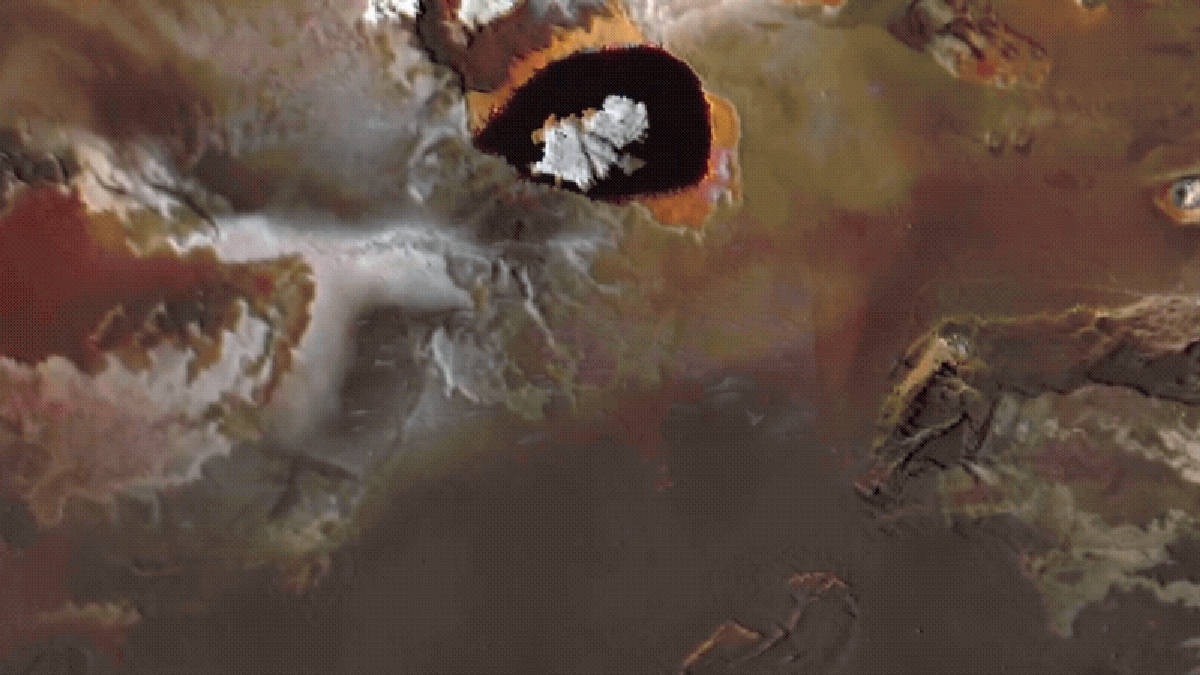Two recent flybys of Jupiter’s moon Io by NASA’s Juno spacecraft revealed a couple of stunning surprises: a remarkably steep mountain and islands in the middle of a burbling lava lake. The new findings were announced yesterday by Scott Bolton, the principal investigator of the Juno mission, at the European Geophysical Union’s General Assembly.
“Io is simply littered with volcanoes, and we caught a few of them in action,” Bolton said in a NASA Jet Propulsion Laboratory release. “There is amazing detail showing these crazy islands embedded in the middle of a potentially magma lake rimmed with hot lava. The specular reflection our instruments recorded of the lake suggests parts of Io’s surface are as smooth as glass, reminiscent of volcanically created obsidian glass on Earth.”
The Io flybys took place in December 2023 and February 2024; Juno came within 930 miles (1,500 kilometers) of the moon’s surface. It imaged Io’s northern latitudes, and some of those close-up images were published earlier this year. The spacecraft has also imaged Jupiter’s moon Europa, whose icy surface stands in stark dichotomy to Io’s hellish environment. But that imagery pales in comparison to the visualizations constructed with new Juno data, collected by the spacecraft’s Microwave Radiometer (MWR) and its JunoCam imager.
The Juno team nicknamed the recently visualized mountain “Steeple Mountain.” Though NASA documents did not state the height of the structure, Io’s Boosaule Montes is one of its most towering structures, clocking in at about 10 miles (16 kilometers) tall.
As noted on NASA’s website, Io’s “constant volcanism and intense radiation make Io an unlikely destination for life.” However, it’s still a fantastic laboratory for researchers trying to understand solar system evolution. Io’s surface is always being renewed, as plains of lava coat the existing rock and cool into new layers.
Future data from the Juno mission could help reveal the abundance of water on Jupiter and the nature of the planet’s core. But there’s plenty worthwhile to study on Io, which Juno has been orbiting for nearly eight years. Juno made its most recent flyby of Io this month, coming within 10,250 miles (16,500 km) of the moon. Its next flyby is scheduled for May 12.
Read more: How Juno’s Breathtaking Jupiter Images Are Made

